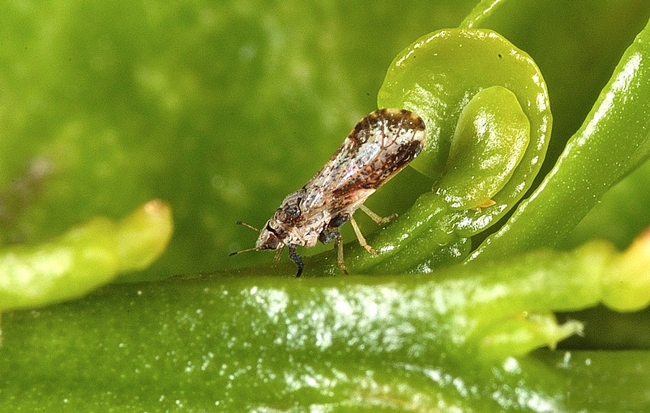
Perhaps still more unsettling is the fact that reproducing populations of ACP have been found in urban areas in Tulare County, confirming that the pest is established in a county where farmers produce citrus valued at more than $1 billion annually.
“The psyllid is here, it's established, but still at low levels,” said Beth Grafton-Cardwell, director of the Lindcove REC and UC Cooperative Extension citrus entomology specialist. “We need to be very aggressive and treat it and eliminate populations as best we can.”
Asian citrus psyllids are a serious concern for California citrus producers because they spread Huanglongbing (HLB) disease. The disease causes tree decline, production of small, bitter fruit and eventually tree death. There is no cure once a tree is infected.
Around the world, once ACP arrives, HLB soon follows. Such was the case in Florida. ACP was first found in 1998, the disease followed in 2005, and by 2008 it had spread throughout the state.
“They allowed the psyllid and the disease to spread on nursery plants,” Grafton-Cardwell said. “Here, it's a different situation. We are taking many measures to reduce psyllid populations and limit their spread around the state in order to buy researchers time to find long-term solutions for HLB disease."
To date, only one HLB-infected tree has been found in California, a multi-grafted backyard tree in Hacienda Heights. It was quickly removed and destroyed. Other trees may be infected, but not yet detected. It will take a tree with HLB about a year to show visual symptoms of the disease. One goal of UC research is to identify a way to detect HLB more rapidly.
For example, scientists at UC Davis are refining a mobile chemical sensor that can detect diseased citrus trees by sniffing their volatile organic compounds. Another team of scientists is looking for changes in citrus trees' metabolism when infected with HLB.
Citrus growers can help by regularly monitoring their trees for signs of ACP and, when treating for other pests, use insecticides that are known to be effective against ACP. A chart of effective pesticides is on the interactive Asian Citrus Psyllid Distribution and Management website.
The website also contains information for residents who have citrus trees in their landscapes. Photos of the adult and juvenile insects, the distinctive waxy tubules left behind when they feed, and citrus leaves from and HLB-infected tree can aid in determining whether home trees are infested.
An initiative to manage endemic and invasive pests and diseases is part of the UC Division of Agriculture and Natural Resources Strategic Vision 2025.